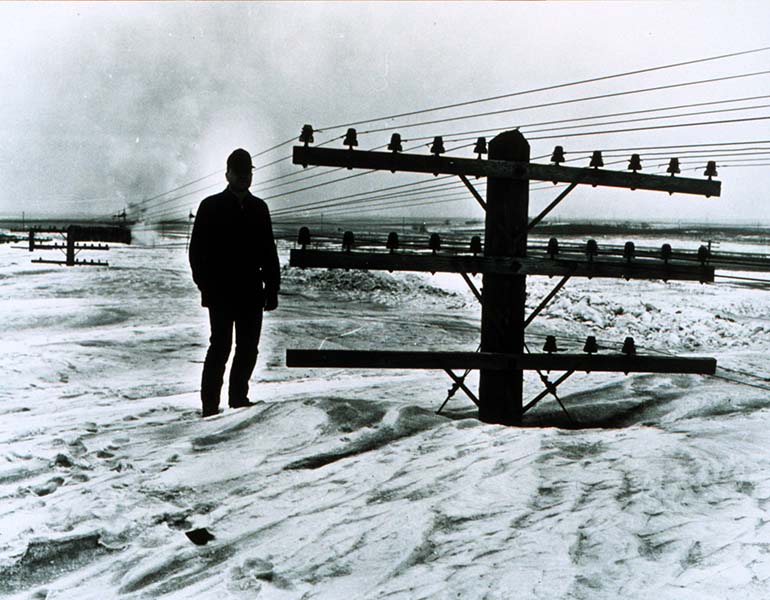In the photo above, from the blizzard of 1966, a North Dakota DOT employee stands next to power lines, which might or might not have been working.* My brother Bill asked our team if the extreme cold in South Dakota earlier this month caused any network problems for our customers. Here’s the report:
- A couple clients suffered frozen pipes that burst, damaging network equipment. All Net Connect technicians helped them install monitoring systems to prevent future disasters.
- Deadwood lost power for an hour or so. When power was restored, some network equipment stayed down. Our techs helped troubleshoot the problems and restore service.
I’m grateful we have smart people who can do this. I’m especially thankful for the men and women of Black Hills Energy, West River Electric, Butte Electric, Montana Dakota Utilities and other utilities. These folks, like the fellow in the photo, work in extreme weather to restore our power. They are unsung heroes.
That said, we do live and work in western South Dakota (or eastern Wyoming). We know what to expect in winter. Not to mention spring. (March is the snowiest month in the Black Hills, and it’s not unusual for April to deliver 2 or 3 feet of “much-needed moisture.) With that in mind, Stanford University and Iowa State University offer handy IT checklists to prepare for outages. Our techs have some ideas, too. Here’s a mashup of those suggestions:
- Before the blizzard hits, do an inventory of equipment and processes vulnerable to power outages.
- List equipment you’ll use during an outage. (Examples range from backup generators to small battery packs to charge cell phones. Don’t forget flashlights and batteries.)
- List actions to take before, during and after outages. (For example, make a list of equipment to unplug during an outage to prevent damage when the power comes back on.)
- Make sure surge protectors are installed..
- Configure cellphones to use voice over Wi-Fi, for redundancy. (If cell service is out but you still have Wi-Fi. Next try your satellite phone, or find the nearest ham radio operator with batteries and a generator. )
- Back up data often. (A good tip year-round.)
- Back up critical files in the Cloud. (So they’re available wherever power is available.)
*In the photo: North Dakota DOT employee Bill Koch on a deep drift next to power lines. The photo was taken by his colleague, Ernest Feland, on March 9, 1966. (From the North Dakota State Historical Society and NOAA/NWS archives.)

